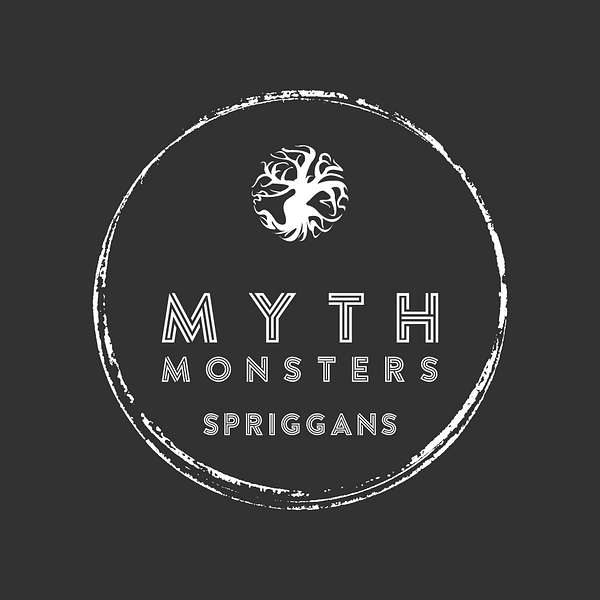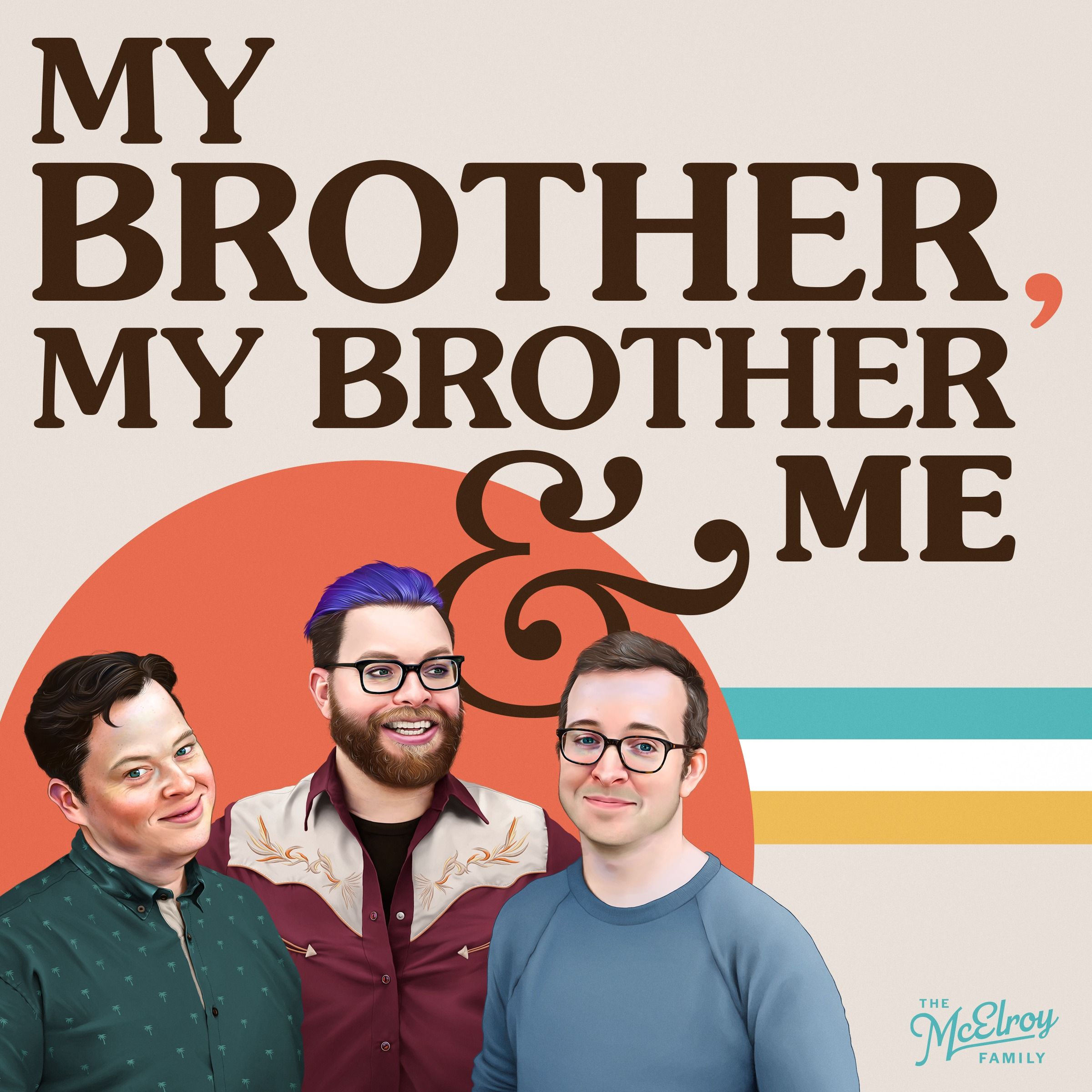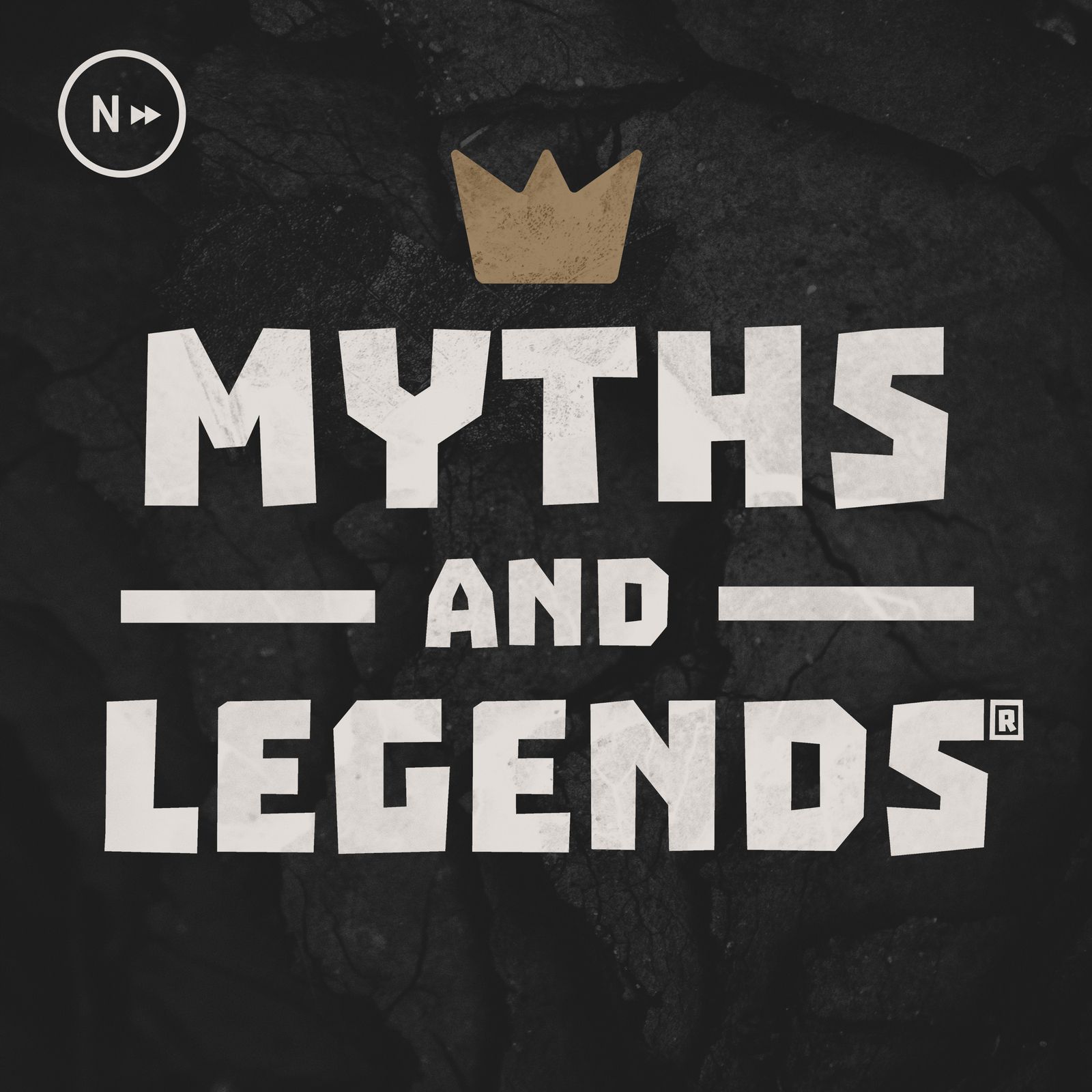
Myth Monsters
A bite sized look into the monsters of global folklore, cryptozoology and mythology with your host, Erin. Jump in and learn about your favourite monsters from Gorgons to Kelpies, to Wendigos to Bigfoot. Stay spooky every Thursday with a new episode with a new monster from another culture. Get in touch on Twitter at @mythmonsterspod
Myth Monsters
Spriggans
For this week's episode, we're staying here in Britain for the Cornish monster, the Spriggan! How do you actually pronounce this monster's name? Why do they steal your kids? Find out this week!
You can find us on:
Social media:
INTRO:
Hello and welcome to Myth Monsters, my name is Erin and I’ll be your host for these little snack bite size podcasts on folklore and mythical monsters from around the world.
These podcasts focus on the actual cryptids, folklore and mythic monsters from global mythology, rather than focusing on full stories of heroes and their big adventures.
I’ll also be dropping in some references that they have to recent culture and where you can see these represented in modern day content so you can learn more, and get as obsessed as I am about these absolute legends of the mythological world.
Apologies for the late release of this one, I went up north this week for work and then had the Baldur’s Gate symphony at the weekend so it’s just been a little bit crazy this week! Don’t worry, you will get a double dose of episodes just to make up for it!
The concert was immaculate though, so totally worth the full focus for a bit - as well as traipsing through Borough Market for deliciousness during the day.
DESCRIPTION:
ANYWAY, we’re sticking around in the UK this week for this monster and you can find one of these in London too surprisingly - but we’re heading to the South-West of England to Cornwall for the Spriggan this week!
Before we start, you might be thinking that hey, didn’t you cover this not too long ago? I did, technically, but on another podcast, Monsters, Myths & Mayhem a few months back - and whilst we covered it in about the same format, it’s time to bring it over to our show, because why not (and it was already in my running order and I don’t like change).
Spriggans are generally described as fairy folk that appear as around 2-3 feet tall, with withered features and are usually depicted as male, but with overly large, child-like faces and heads. They are sometimes depicted as being green and plant-like in their appearance, with roots for feet and leaves for hair - but in other depictions, with just plant accessories and still having leafy or mossy hair. I will stress though that they were considered grotesquely ugly - so get rid of that male mini-Poison Ivy in your head please.
They are generally seen as antagonistic, and if you had issues with them - you had usually offended or annoyed them in some way but they also typically did not like humans. They had the power to grow to a gigantic size, as well as controlling the weather, creating whirlwinds or blighting crops with storms. They worked to create as much havoc for travellers and farmers as they could, and they also did typical fae things like stealing human children and swapping them out for their offspring as Changelings or making you forgetful enough to leave the right path home so that you eventually died of exposure. Or they’d just burgle your house or make it collapse on top of you, then steal all your livestock - you know, normal English fae things.
Speaking of that, I did mention they’re from the South-West part of England earlier, in a beautiful coastal county called Cornwall - making them a Cornish monster. You may recognise the word Cornish if you’re not familiar with the UK geography thanks to another monster, Pixies - and if you’ve ever watched the second Harry Potter film, you’ll most likely remember the Cornish Pixies causing problems in Lockhart’s first class. Cornwall is known for its great beaches and surfing, as well as a quality fish and chips - but also its independent folklore, which we’ll get into the history of later. But because of the coastal landscape, there are plenty of hills and cliffs as well as many ruins that Spriggans would love to hide in.
Their favourite places to live are in barrows and cairns, which are old Gaelic terms for ancient burial mounds - which throughout our history, we’ve got loads of in the countryside. Spriggans would usually be guarding some kind of ancient treasure, meaning that if you went poking about trying to find it - you would usually meet the fury of the Spriggans I mentioned earlier. You could figure out which place had a Spriggan in by the faint music you can hear coming from around the stones, as they would often play the flute or other wind instruments and dance whilst in their homes.
It was also tradition for Spriggans to gather together on Christmas Eve, where they would play their instruments in the bottom of mines and sing together. Apparently it was truly a sound to behold, and it would be the one night they would allow humans to listen to them do their thing without injury. However, it was also thought that these were Knockers or Buccas, another Cornish monster family that lived under the earth in the mines.
They are sometimes known as the bodyguards to the fairies, protecting not only their treasures, but any entrance into the fae realms. They would sometimes curse you with a bit of bad luck just for walking by their home, just as a preemptive warning to not mess with them. This is because they were believed to be descended from the souls of Giants, which were also common UK monsters - and explains their ability to turn into massive giant plant boys. However, even though they had this reputation, they could also be working for another, more powerful fae entity as their slave or hired sword - so they’re not invulnerable to fae hierarchy either.
We don’t know a few things about Spriggans though, such as if they die, what they eat or how they reproduce - although there are usual fae assumptions, such as they will most likely be immortal or return to nature if they do pass away, but will be invulnerable to any damage a human could do. They most likely live off of nature’s bounty of fruit and vegetation and in terms of reproduction, we guess that it’s through mating with other species of fae, but then they’ll switch them for human children anyway in the end.
How could you make sure they don’t attack you whilst you’re geo-caching? Wear your clothes back to front and inside out and that should do the trick - this is to highlight that you’re not a usual human, and that you’re known by the fae, meaning that they won’t think you are any threat. You could also have some iron on you, as all fae are allergic to it - that one works too.
ORIGIN:
Now onto etymology and before we even talk about the meaning, let’s talk pronunciation. You might think I’m bizarre pronouncing it the way I am, but it’s the proper Cornish way of saying it. Whilst it’s tempting and probably a bit easier to say Spriggan, it’s not correct and I didn’t know this before researching so it’s not massively common knowledge by the sounds of it.
Spriggan however, as a word comes from the Old Cornish language, spyrysyon, which means spirits - pretty basic I’m afraid.
Their history, unfortunately, is pretty lacking in comparison. We don’t actually know much about them specifically, but what I can tell you is the history with Cornish folklore and English fae folklore as a base for this one.
In wider British fae history, the fae have been around in our collective island folklore since around the 13th century officially, however, the idea of fairies have been around for even longer and is believed to be from the Pagan belief system across Europe, including the UK. However, in the UK, before the Roman invasion, we had the Celts in 1300 - 800 BC. The Celts were pagans and had their own version of the fae, the Tuatha De Danann, and this lived through the Roman Christian takeover, but only just with the last Pagan king dying in the 600’s on the Isle of Wight.
However, with the death of the last Pagan king - there is still hope for British fae folklore. Many continued to be Pagan throughout the Anglo-Saxon era, however it was more demonised as the years went on - but at this point, England was not England yet and still separated into multiple kingdoms, which are now just counties to us. Here’s where Cornwall comes in, Cornwall was the kingdom of Dumnonia back in the Anglo-Saxon times, which was in the 5th - 11th centuries and it’s also when the Vikings invaded the British isles. There was a heavy Pagan influence from the Norse as they integrated into British society.
But Cornwall is at the very nose end of the south west, meaning the Vikings never got down there and the Celtic influence was stronger as they were isolated and underneath the Welsh and next to the Irish, which were all still massively Pagan. Thus, the Cornish folklore subcategory was formed - from this smaller, isolated kingdom full of rolling hills, shady woodland, sandy beaches and plenty of Pagan influence and architecture. Then like, 2 years later, 1066 happened and everything changed again - but we won’t get too into British history because I could talk about it forever.
So long story short, we believe that the Spriggans come from these original Celtic nature beliefs, which influence all of the UK’s fae background but in Cornwall, was just cherished for a little while longer before it was pushed into folklore instead of common belief. It’s also the perfect place for these creatures to live with that lush environment, alongside some other really well known creatures of the Cornish countryside.
There are a few other mythical creatures that are often linked to Spriggans, such as Giants and Pixies, which we discussed earlier - but as well as that we have the Knocker, an infamous British monster and is considered a hobgoblin that lives in the mines. Cornwall was a huge mining community as they had large veins of tin and copper, and Knockers were believed to trick miners into mining harmful substances or collapsing mine shafts, as well as stealing their tools and food or extinguishing essential candles for their work. We do also have the Bucca, but these were mostly just sea-spirit versions of the Knocker - but were also known to help out with mining from time to time.
The myth of the Spriggan goes on though, and they are immortalised in London as I mentioned at the beginning of the episode. In 1993, a sculpture of a Spriggan by Marilyn Collins was made in Crouch End, and if you walk between Finsbury Park and Highgate station on the Parkland Walk route, you will see the Spriggan emerging out of the wall. It’s a gorgeous, but slightly creepy statue - but I really recommend going to see it if you’re ever in that area.
CULTURAL SIGNIFICANCE:
Now onto modern media, where it kind of continues to live on. There’s not much though however, and I’ve done my best to fill this out with other fae bits too.
For art, have a look at Marilyn Collins’ statue because it is just gorgeous - otherwise, there’s not really many bits around for this one other than in the video games they’ve starred in, so check out the independent stuff where you can!
In movies, we have; Harry Potter, The Spiderwick Chronicles, Artemis Fowl, The Dark Crystal, Maleficent, Willow, Pan’s Labyrinth, Godzilla & Labyrinth.
For TV, we have; Ancient Magus’ Bride, Spriggan, Fairy Tail, Merlin, Sword Art Online, Fairly Odd Parents, Pixie Girl & Winx Club.
In video games, we have ones such as; World of Warcraft, Dungeons & Dragons, Elder Scrolls: Oblivion & Skyrim, Beyblade Burst, Folklore, Coded Soul, Shin Megami Tensei, Home Safety Hotline, Kingdoms of Amalur: Reckoning, Digimon, Final Fantasy 14, Sable’s Grimoire, Monster Rancher, ZanZarah: The Hidden Portal & A Very Long Rope to the Top of the Sky.
My book recommendation this week is for a couple of books; one of which being about Pagan Britain if you’re interested in that time and this part of the world, and it’s truly a great book called, funnily enough, Pagan Britain by Ronald Hutton. Or for more British fae, have a look at Fearsome Fairies: Haunting Tales of the Fae by Elizabeth Dearnley or The Fairy Races of the British Isles by Robert and Rhiannon Ellison.
DO I THINK THEY EXISTED?
Now it’s time for, do I think they existed?
I’m going to say probably not for this one and I’m so sorry to let my Celtic roots down - but it seems like a typical fairy tale to me. Spriggans are a guardian of treasure and it seems to me that they’re a personification of karma, you take something that isn’t yours, especially from a gravesite, and you get cursed with eternal bad luck? Sounds pretty just to me honestly.
I do love the British identity with fae folklore though, and one of my favourite games of all time is Kingdoms of Amalur and it’s all based on Celtic and Gaelic folklore, and whilst there aren’t Spriggans in it, there are sprites and Boggarts and Barghests and that just makes me a little proud every time I play it. I love that we are so linked to it and that we were once believers in all of this, and even as a British pagan, I struggle to link myself to that now - so I guess it’s also kind of bittersweet to me in a personal way.
Also, a great reflection of British history and as I said, I could go on about them forever because I’ve read all of the Horrible Histories books about 4000 times and would definitely do well in Mastermind on British folklore and history, just saying.
But what do you think? Did the Spriggans cause chaos in the English countryside? Let me know on Twitter!
OUTRO:
I really liked covering this one - and it’s one I’ve covered indirectly on a guest spot before, so if you want to hear me talk about Spriggans with others, check out the Myths, Monsters & Mayhem episode that I was on. I also love English fae stories, so there’s that too.
Next week, we’re heading over to medieval France for an Arthurian legend which is a little different and fun. Bring your knights of Camelot next Thursday for the Questing Beast!
For now, thank you so much for listening, it’s been an absolute pleasure. If you enjoyed this podcast, please give it a rating on the service you’re listening on - I’ve got the twitter for any questions, or suggestions on what monsters to cover next and I’d love to hear from you. The social media handles for Tiktok, Youtube, Threads and Instagram are mythmonsterspodcast, and twitter is mythmonsterspod. But all of our content can be found at mythmonsters.co.uk, including some very cool merchandise - you can also find us on Goodpods, Buymeacoffee and Patreon if you want to help me fund the podcast too.
Come join the fun though and share this with your pals, they might love me as much as you do.
But for now, stay spooky and I’ll see you later babes.
Podcasts we love
Check out these other fine podcasts recommended by us, not an algorithm.

FolkLands
Tim Downie, Justin Chubb
Chatsunami
Satsunami
The Howdy Beans Podcast!
Luke The Elder Bean!
My Brother, My Brother And Me
The McElroys
Myths and Legends
Jason Weiser, Carissa Weiser, Nextpod
Lore
Aaron Mahnke
Exploration: Dreamland
Exploration: Dreamland
The Neatcast
Jeremy, Zack, Mike
Effin' Cultured
Bobby, Griff, and The Rik
